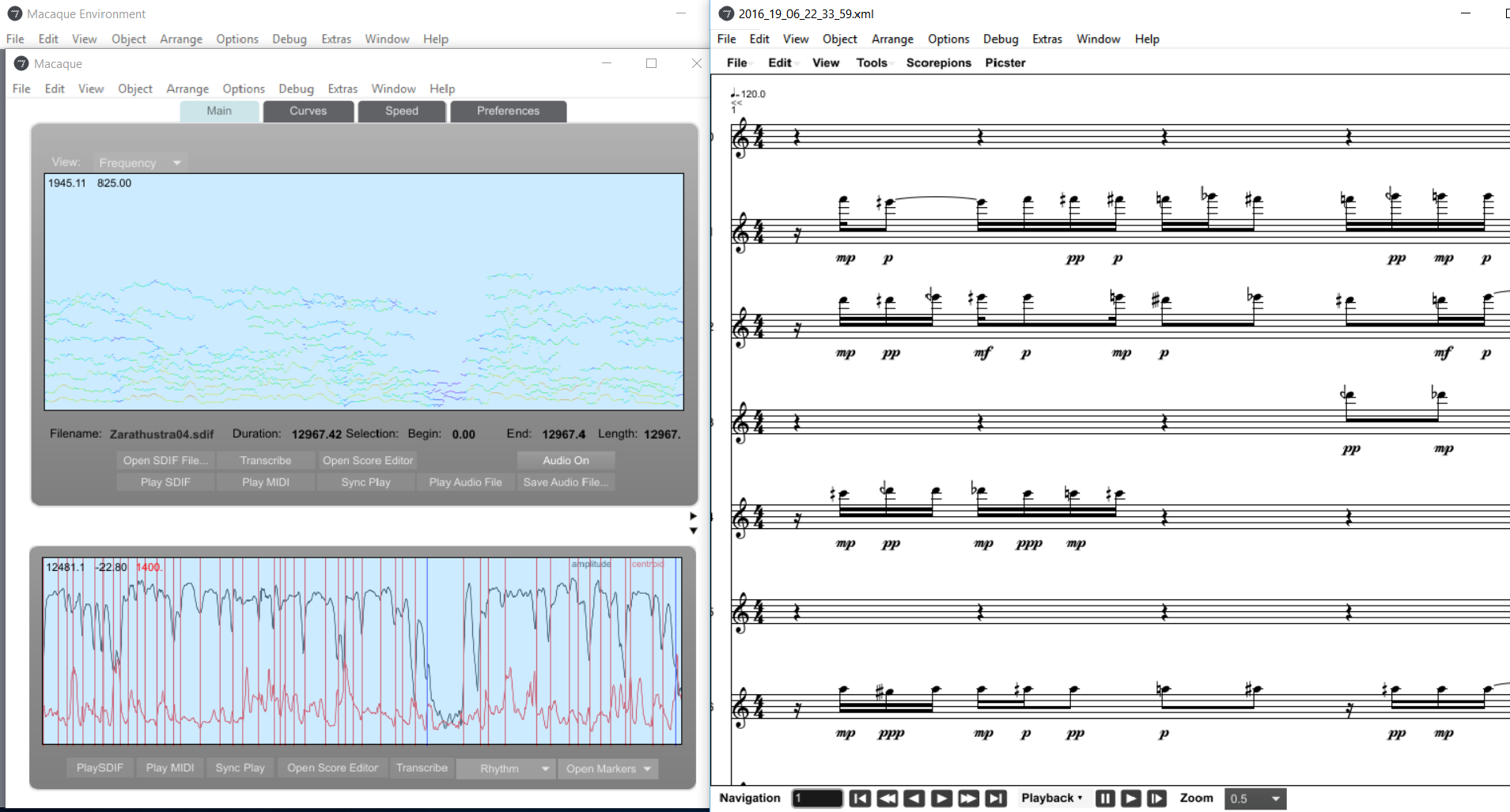One early example of artistic research practice is Georg Hajdu’s opera “Der Sprung – Beschreibung einer Oper” (1999), with libretto by Thomas Brasch. It’s entire harmonic and formal structure was generated from a spectral analysis of a 5.4 seconds long sentence which the librettist left on Hajdu’s answering machine. Stemming from the nature of many spectralist approaches, the opera is rife with microtonality, and neural network was used to guide the melodic interpolations in one of the scenes. Usage of such fringe technologies in a bold, new and experimental set-up, along with the detailed analysis of the process of creation and the accompanying paper describing it is, in this author’s opinion, what makes “Der Sprung” such a cornerstone and a blueprint for the type of artistic research possible in the field of multimedia.
Due to Georg Hajdu’s deep interests in both spectral music, as well as in computer programming, it is no surprise that he drew on these two passions and created his own software environment called “Macaque” to help with spectral composition. The environment converts pre-analyzed audio files into sheet music using MaxScore to generate and display the scores. What makes Macaque such a powerful tool is it’s customizability and the unprecedented degree of control the user has over the material. Among other things, the composer/researcher is free to choose between transcribing rhythm, fundamental, lowest or salient pitches, centroids, chords, or to generate their own transcription points using markers; not only that, but through the use of various break point functions, one is able to modify amplitudes and speed, utilize spectral stretching and transpositions among other techniques.

Screenshot of Macaque environment and the resulting MaxScore notation